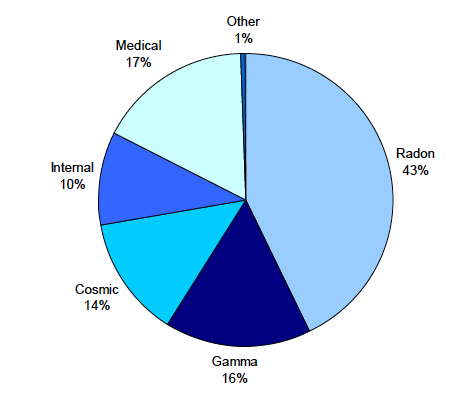Key Scottish Environment Statistics 2012
This publication aims to provide an easily accessible reference document which offers information on a wide range of environmental topics. It covers key datasets on the state of the environment in Scotland, with an emphasis on the trends over time wherever possible.
This document is part of a collection
Exposure of the Population to All Sources of Radiation: 2003[1]
Average annual dose in Scotland, 2,400 microsieverts[2]

The average annual dose of radiation to someone living in Scotland is 2,400 microsieverts, 83% of which comes from natural sources. The main source of natural radiation exposure is radon, a radioactive gas that is emitted from tiny amounts of uranium naturally present in materials such as rocks, soils, bricks and concrete.
Radon decays and emits short-lived products that can increase the risk of lung cancer. The action level for radon in the home is 200 Bq/m3, above which measures should be taken to reduce concentrations. Other important natural sources of radiation are cosmic rays, terrestrial gamma rays and long-lived radionuclides that enter the body through food and drink.
The greatest artificial source of exposure to radiation comes from medical x-rays. Nuclear waste disposals and fall-out account for less than 0.3% of exposure. The Chernobyl reactor incident in 1986 caused average annual doses from fall-out to increase by about five times that year.
Source: Health Protection Agency - Radiation Protection Division / Metadata
Contact
Email: Sandy McPhee
There is a problem
Thanks for your feedback